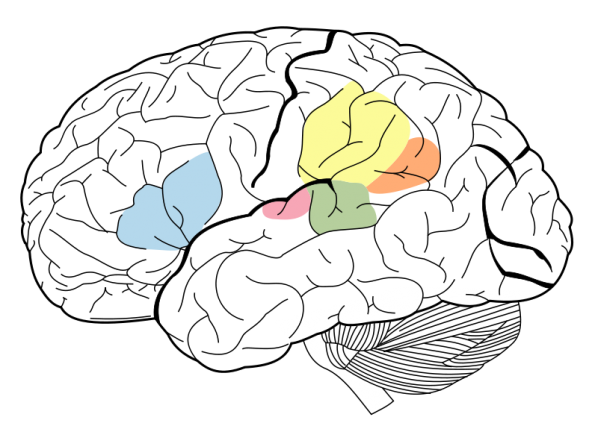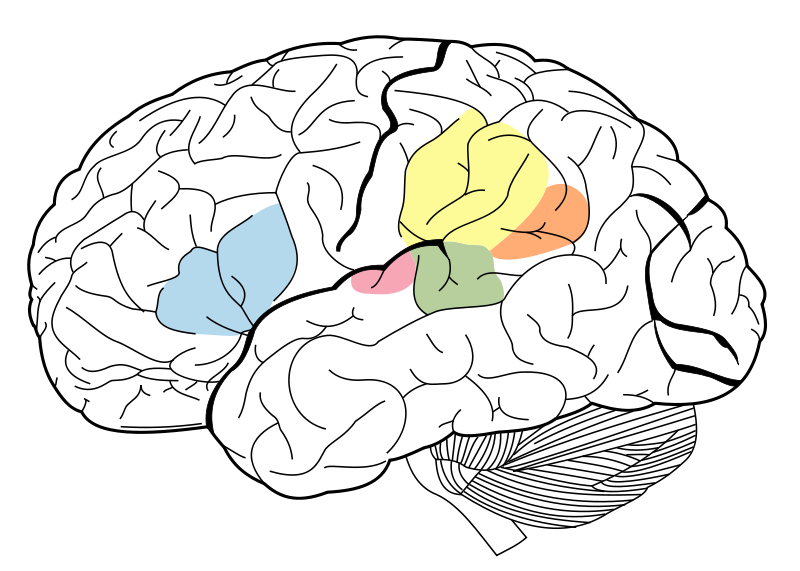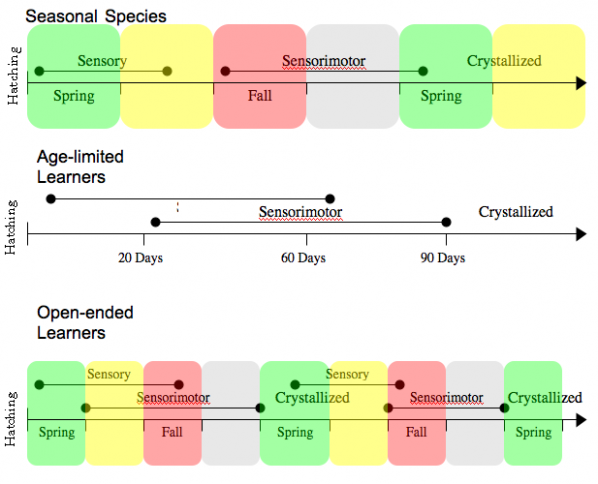
For humans, our language faculty is our most impressive and complex behavior. No single species comes close to matching the breadth of our expressive domains; it is estimated that there are nearly 7,000 linguistically distinct languages spoken in the world today (1), and inconceivably more still undiscovered. To give an idea, researchers recently collecting linguistic data in several villages contained in 100,000-square-kilometer area of Yunnan Province found 18 previously uncatalogued languages. In the Yunnan Province alone, it is speculated that nearly 150 linguistically distinct languages are spoken, many of which are still undocumented (2). This figure represents only a small portion of what remains unknown globally.
The emergence of language as an exact point in our evolution remains a contentious question among researchers in the field. Some argue that for us to have such sophisticated and diverse languages today, spoken language must have arisen some 100,000 years ago (3). However, this figure is highly controversial. Communication was originally gesture-based, and with time (and our increasing social demands, cognitive capacity, and improved vocal anatomy), spoken language emerged tens of thousands of years later. Still, we developed a written language system, and finally, modern language has evolved, grown and branched into the hundreds of different language families that we’ve categorized today. In the brain, the primary language areas include Broca’s and Wernicke’s. Their roles in speech production and language comprehension, respectively, were originally determined via lesion case studies (4,5). Language is not entirely hardwired, however, and requires exposure early in life during a critical period before age 5 for its proper acquisition.

So, what makes our language system so unique compared to the rest of the animal kingdom? Well, simply the fact that with a finite set elements we can produce an infinite array of utterances, of which are dictated by systematized, socially- and culturally- (to the specific language used), inherited grammatical rules. No other form of communication has such boundless expressive capacity, interpretive demands, and rule governed formation. Animals, on the other hand, have more limited communicative means, needing only to express simpler, more isolated information (food is here, predator is there, etc.). Their capacity is largely genetically, not culturally or socially, inherited, as it is with us (6, 7). But without taking for granted this exquisite tongue of ours, let’s not neglect some of the communicative properties that we share with animals, or fail to note the unique modalities employed by animals to communicate to one another. Even though animals’ communicative methods are mostly pre-programmed, many require environmental exposure during a sensitive period just like us. This is the case with several song bird species, who cannot normally develop their mating calls unless they’ve heard other adults’ mature songs and practice their own during a specifically-timed sensorimotor period (8).
Moreover, some birds (such as the White Crowned Sparrow) demonstrate geographical dialectal variation in their song calling within their own species, like we have in American-English (9). Many animals use means or even senses that we do not– elephants, for example, can use seismic sensing to direct information to other herds miles away. Elephants create low-frequency vocalizations at such high amplitudes that the vibrations couple with the ground and travel along the Earth’s surface with a distinct velocity from their airborne counterparts. These signals are detected by a combination of mechanoreceptors (vibration sensitive receptors, much like in our own skin), bone conduction, and acoustic fat (similar to that in the heads of many porpoises using echolocation) in their foot pads (10). Bees perform an elaborate dance known as the waggle dance to advise the colony on prime foraging areas. The bee actually incorporates the angle between the sun, food source and hive to give other bees directionality, vibrates in proportion to the quality of the food source, distributes samples of the nectar to hive mates, and even encodes the distance between the hive and food source in the dance run durations, at a rate of 75 milliseconds per 100 meters (11). They can even warn their colony if danger, such as a predator, lurks in a food patch (11). Other social insects like ants, as well as a number of other animals, communicate almost exclusively with chemical cues called pheromones… Imagine if the bulk of your sensory experience is perceived in odors, and not primarily vision and hearing, as it is for us humans!

Like so many living things in this world, even our languages are endangered. Despite efforts made by language conservationists, thousands of languages have been dying, at a rate of one per every two weeks (13). For some languages, especially isolated tribal languages, there may be issue of an entire tribes’ population dying out, leaving no one left to speak it. In some countries trying to standardize and unify to one or a few national languages, people are discouraged or even persecuted for speaking their natural, minority tongue. It is no longer taught in schools or in the household, and generations beyond leave it behind.
Of course, these are only a few reasons behind language extinction. But facing this reality is tragic, because a language tells us everything about that culture. And knowing how a people has developed and adapted a language to their specific needs and environment reflects so much more than just their own lives– it’s another piece to our evolutionary puzzle on how and why language emerged for humanity. For instance, some of these disappearing languages have remained intact for tens of thousands of years, and could be a potential clue in what man’s earlier language was like. Without a comprehensive classification of the known languages, we have an enormous hole in our linguistic evolution. Similarly, it is important to study how animals communicate, to better realize their evolutionary progress and cognitive development. It’s truly remarkable to see the ways in which they interact and express information to their species and others, as it is for ourselves… And this is our richest and most crucial product to celebrate.
_____________________________________________________________________________
References
http://news.bbc.co.uk/2/hi/8500108.stm.



One Comment on “Language In Us and Animals”